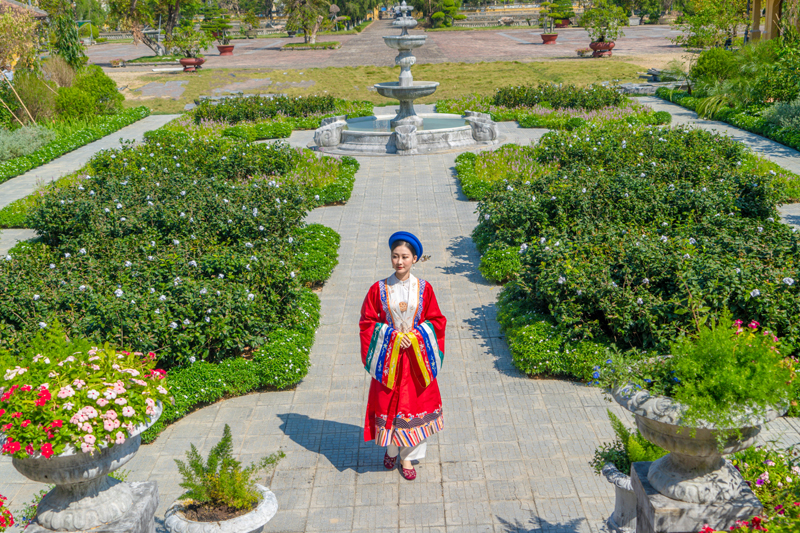More than ten years ago, for the first time, Hue hosted the 12th Vietnam Film Festival, which honored many famous films such as Nga ba Dong Loc, Ai xuoi van ly, Nhung nguoi tho xe, Hanoi mua dong nam 46, etc. Hue people are therefore not unfamiliar with hosting a film festival.

White Camellia Garden where the movie Gai gia lam chieu V (Royal Bride V – The Camellia Sisters) had been shot was presented to Hue Monuments Conservation Center. Photo: Luc Bao
The newly-built Perfume River Theatre will be equipped with more facilities to replace the Culture and Communication Center as the hall for the opening and closing ceremonies. Old and outdated cinemas have been replaced with more modern ones too.
Lotte Cinema, Starlight Cinema Hue, BHD Star Hue, especially Cinestar help change the face of cinemas in Hue City.
Besides cinemas embedded in shopping malls, Hue now has Cinestar, a professional and modern cinema, to serve the audience and to welcome the film festival.
But the more important thing is the love and aspiration of Hue people for the seventh art. In 1992, the French movie Indochine was the first foreign movie which was allowed to be shot in the Imperial City and royal mausoleums. It also won an Oscar for the Best Foreign Language Film. Besides, many other famous movies were shot in Hue such as Ngon nen hoang cung (The Royal Candle,) Trang noi day gieng (The Moon at the Bottom of the Well,) Co gai tren song (The Girl on the River), etc.
Not until 2019 when Mat biec (Dreamy Eyes) was shown did people begin to realize fully the cinematic atmosphere in Hue. After the film was shown, the number of people who came to visit Ha Cang Village in Quang Phu, Quang Dien increased.
The big old tree, where Ngan played the guitar for Ha Lan, is best visited by the young. They give it the new name Dreamy Eyes Tree. At the same time, the video clips Nang dau xu Hue (The Hue Bride) featuring Hue cuisine and the minimalist life, Hoa no ve dem (Flowers Blooming at Night) (shot mostly in the ancient village of Phuoc Tich, An Hien Garden House and some royal mausoleums,) and Gai gia lam chieu 3 (The Royal Bride) shot in the modern setting of Hue.
Hue starts to be mentioned as a film studio and there has been a boom in cinema tourism. The movie Indochine is an example. After winning the Oscar, the number of tourists from Europe to Hue increased dramatically. France has always been among the top five countries from which tourists visit Hue.
Tourism and cinema always correlate. If properly exploited, the locations where movies have been made will become exciting check-in spots for the audience.
On the occasion of the 22nd Vietnam Film Festival, an exhibition and a workshop on the topic “Hue in Movies” will be organized. People will be encouraged to wear ao dai and Hue cuisine will be introduced. Some people suggest a prize for the best movie about Hue awarded by the province as a way to promote the dream of making Hue a film studio.
By Dan Duy